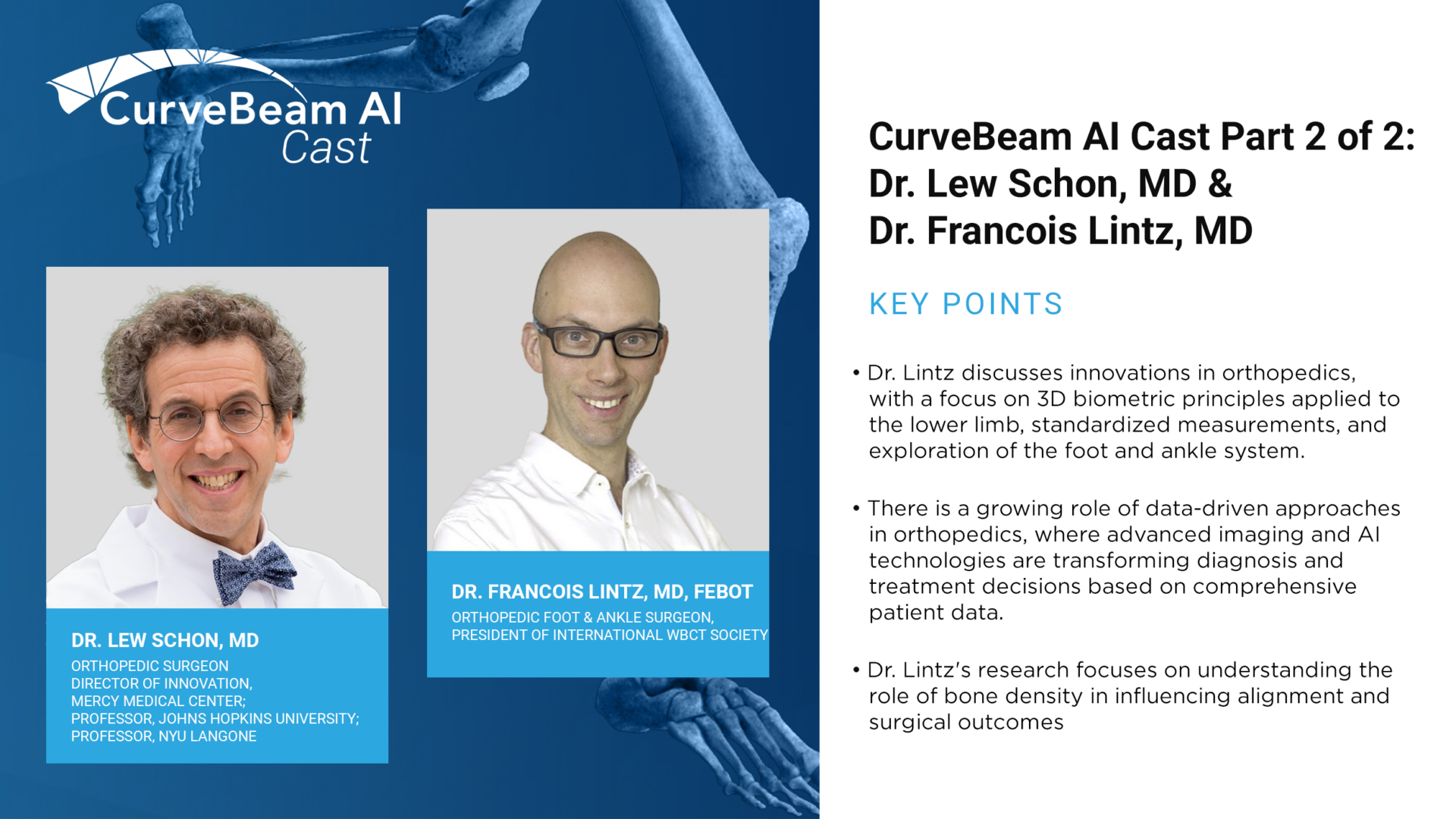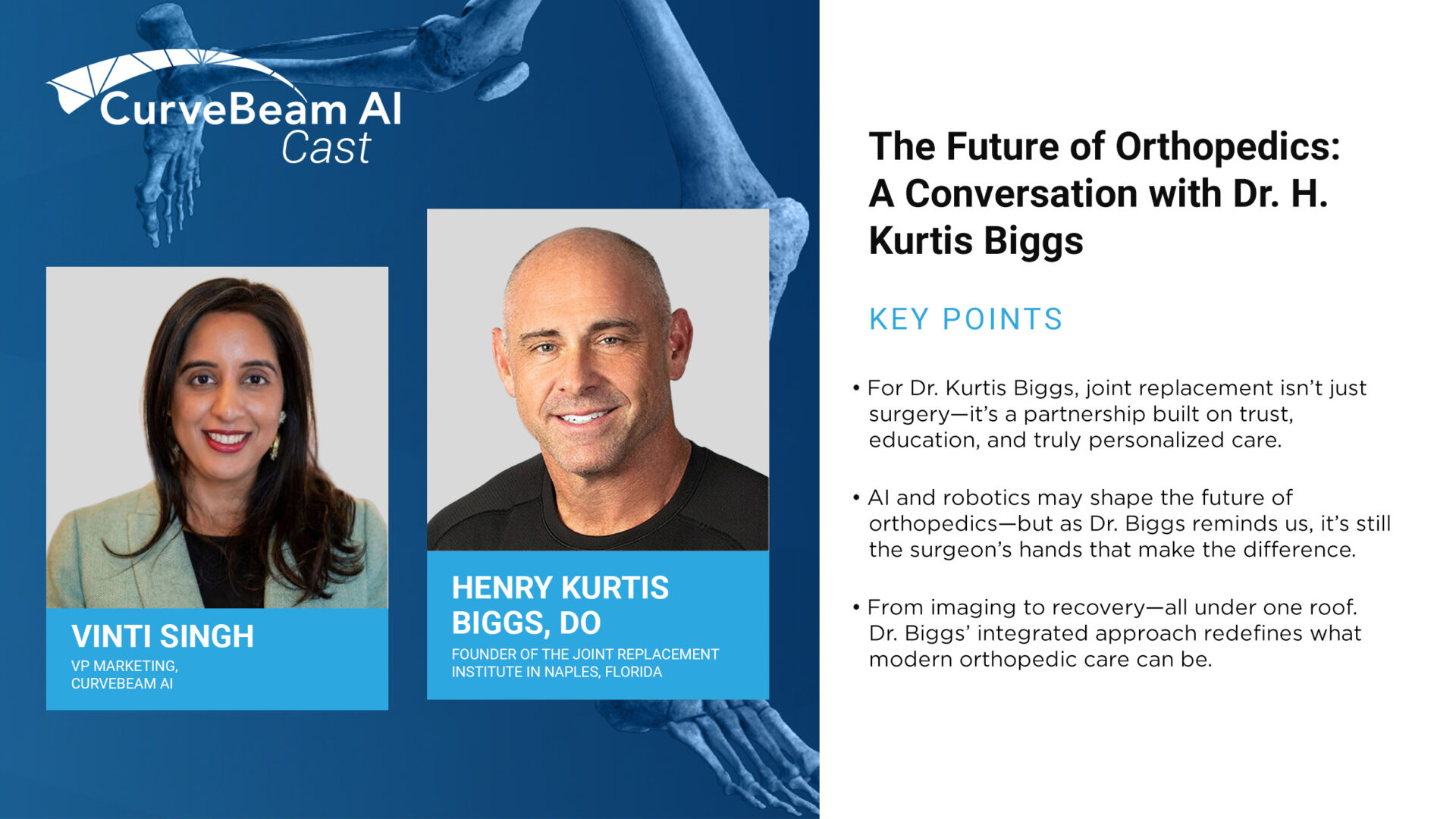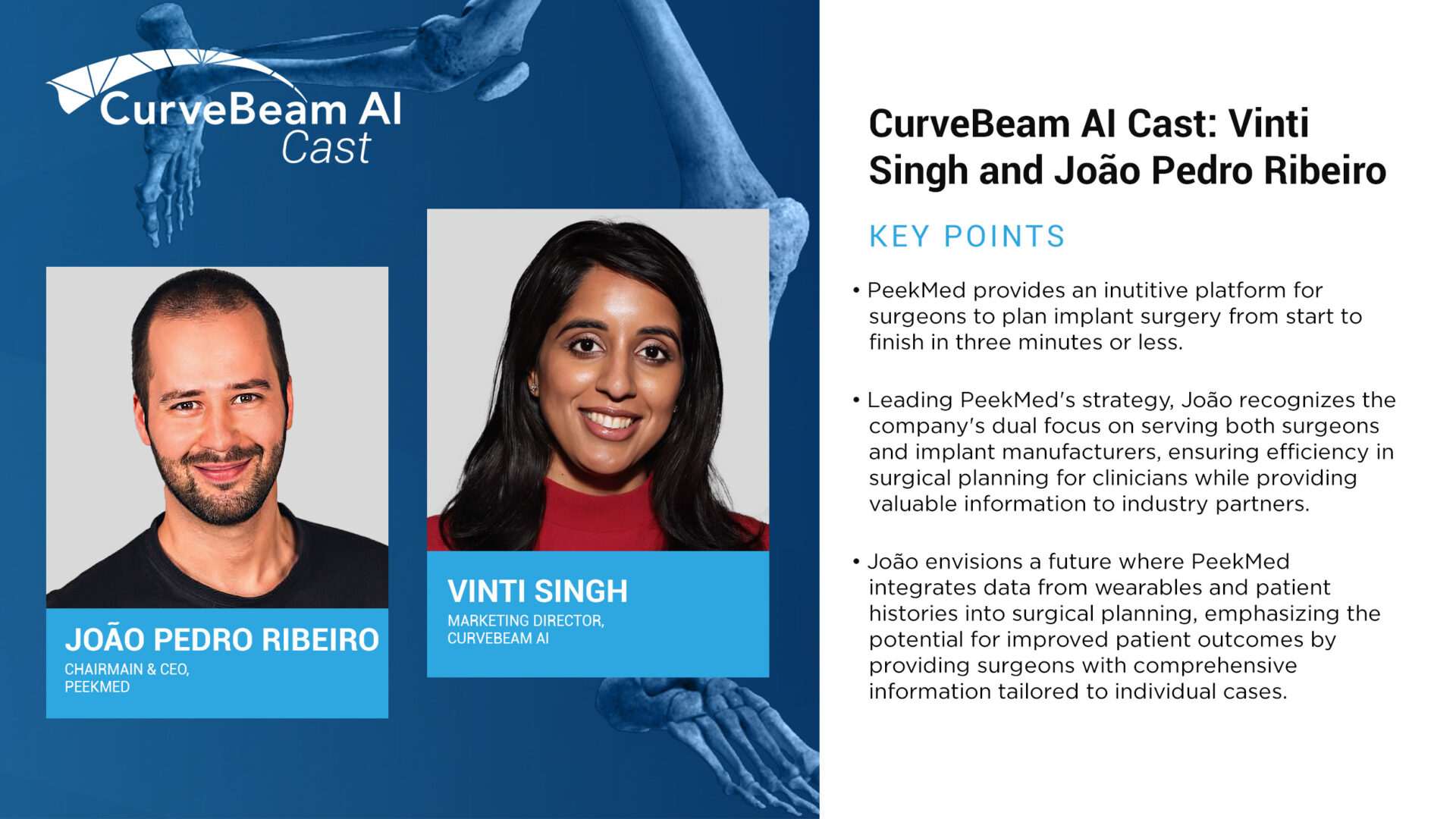In a recent episode of CurveBeam AI Connect, Vice President of Marketing Vinti Singh spoke…

CurveBeam AI Cast: A look into The Benefits of Weight Bearing CT with Dr. Francois Lintz Part 2
The benefits of Weight Bearing CT (WBCT) usher in a new era of orthopedic diagnostics, illuminating previously obscure aspects of hindfoot alignment. The shift from 2D X-ray technology to 3D imaging has been profound, offering a more intricate understanding of bone structures and alignments, which is critical for effective treatment plans. Numerous research articles point to the reliability of different approaches in conventional X-ray and cone beam CT, showcasing the reliability of WBCT in hindfoot alignment assessment.
As the dialogue around these advancements intensifies, the overarching query resonates within the medical community: How does this technological leap influence the accuracy and efficacy of orthopedic diagnostics and treatment?
In this second of a two-part CurveBeam AI Cast series hosted by Dr. Lew Schon, MD, a renowned Orthopedic Surgeon and Director of Innovation at Mercy Medical Center and Professor at John Hopkins University and NYU Langone, continues his conversation with Dr. Francois Lintz, MD, FEBOT an esteemed Orthopedic Foot & Ankle Surgeon and past president of the International WBCT Society. In this second conversation, Dr. Schon and Dr. Lintz look deeper into the groundbreaking advancements of 3D imaging and the benefits of WBCT.
Highlights from Dr. Schon and Lintz’s second conversation include:
- Lintz’s pursuit of expanding 3D biometric principles beyond the foot and ankle to encompass the entire lower limb, alongside standardizing these principles through an initiative called the “scanner’s endeavor”
- The introduction of a visualization tool known as “distance mapping” enabling a more nuanced analysis of joint space width, aiding in the differentiation between ligament laxity and early arthritis
- The innovative exploration into bone density as a “fourth dimension” in orthopedic imaging, opening doors to more precise diagnosis and treatment planning




